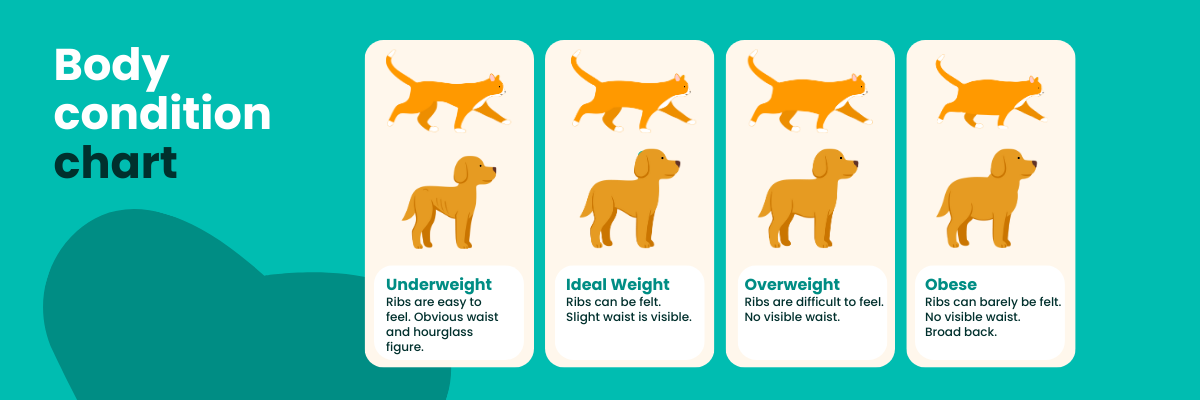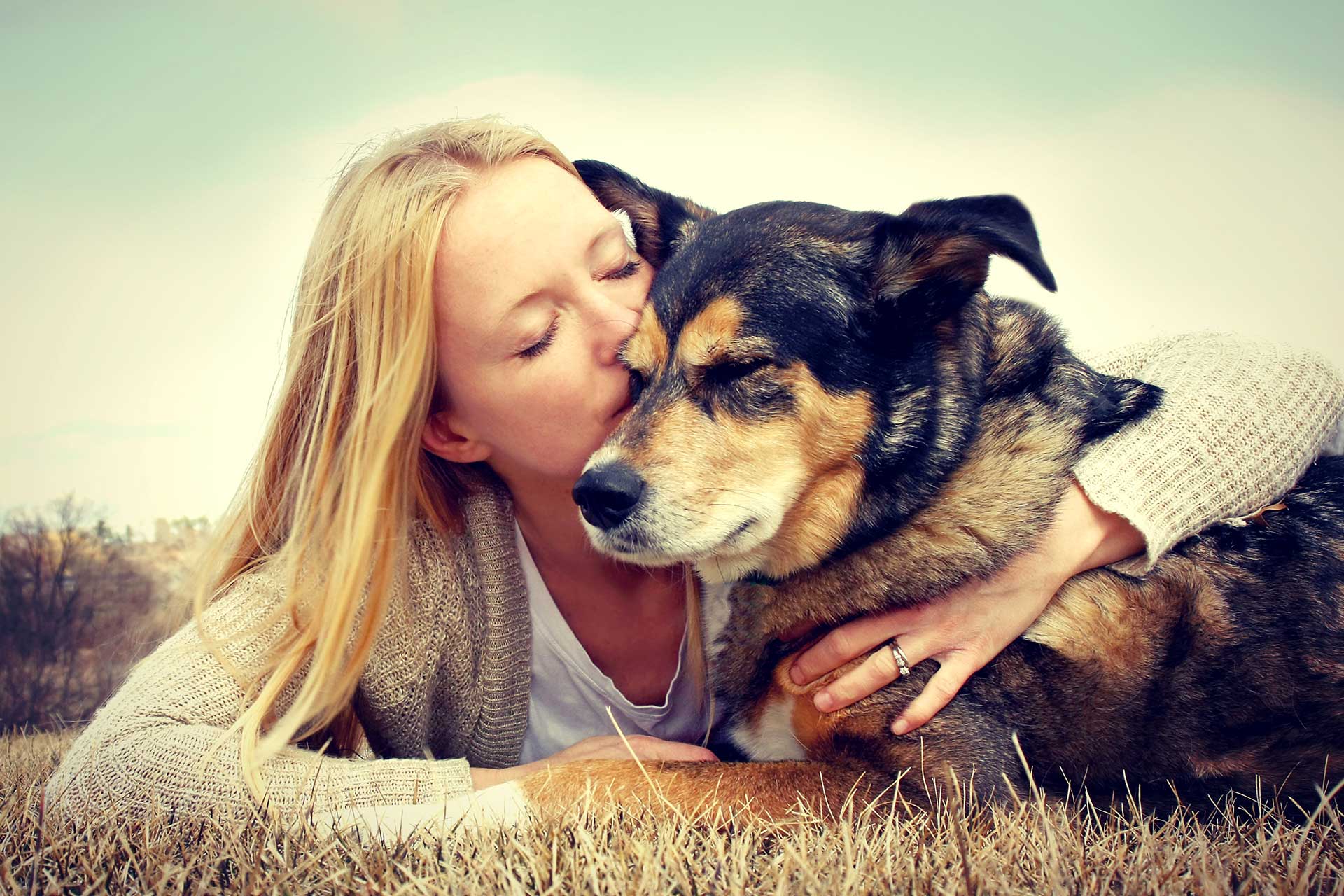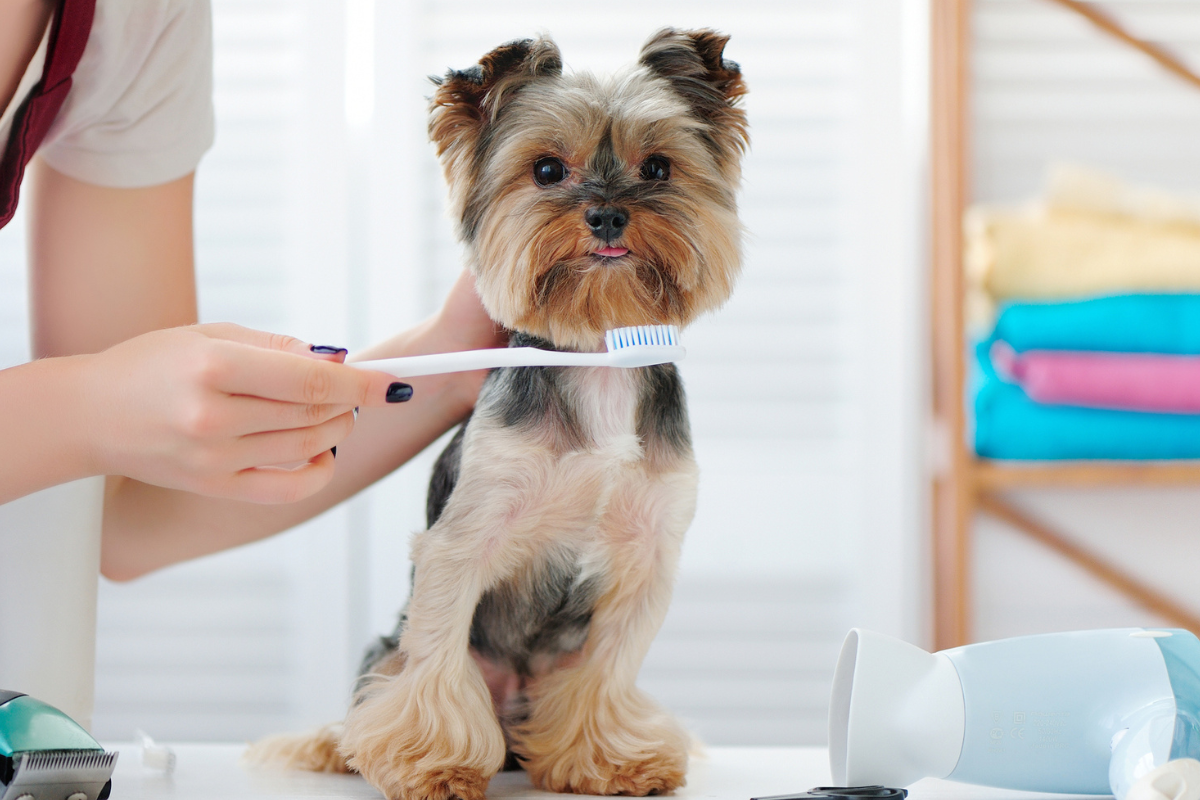Is your pet carrying some extra weight? In a world full of treats and cozy beds, it’s common for our pets to become overweight. Similar to humans, carrying excess weight can lead to a number of health issues for our beloved cats and dogs. Let’s delve into how to recognise if your furry friend is overweight and discover tips to help them shed those extra kilos.
What causes pet obesity?
Overeating and lack of exercise are the primary culprits behind pet obesity. A national survey has revealed that 41% of dogs and 32% of cats in Australia are either overweight or obese* – and most owners don’t even realise it until they visit the vet. Responsible pet parenting plays a crucial role in preventing weight gain, including avoiding extra and unhealthy treats and ensuring your pets gets regular exercise.
Vet tip: Before making any dietary changes, talk to your vet to rule out any underlying medical conditions that could contribute to your pet’s weight issues.
Health risks for overweight pets
Pets carrying excess weight face health risks similar to humans. Even a modest 15% increase over their ideal body weight can put them at risk of developing the following conditions*:
- Diabetes
- Cardiovascular disease (heart disease)
- Degenerative joint and orthopedic disease (including arthritis)
- Joint stress or musculoskeletal pain
- Respiratory problems
- Cancer and tumours
- Skin problems
- Hypertension (high blood pressure)
- Reproductive disorders
- Decreased quality of life
- Shorter life expectancy
Signs your pet is overweight
Here are a few signs your pet might be overweight:
- Difficulty feeling their ribs
- Lack of a defined ‘waist’
- Visible fat deposits and rolls
- Reduced or inefficient grooming, if at all
- Reluctance or disinterest in exercise
- Quick fatigue and refusal to continue physical activity
- A ‘waddle’ or abnormal movement in their walk
- Frequent panting, even without movement or exercise
While your vet can assess your pet’s weight during routine check-ups, you can also perform a check at home by placing your hands on the sides of their body and gently feeling their ribs. If their ribs are difficult to feel or cannot be felt at all, your pet may be overweight.

Helping your pet lose weight
Follow these steps to help get your pet back in shape.
Visit your vet
If you think your pet is overweight, book an appointment with your vet. In addition to assisting you in creating a personalised weight loss plan for your pet, your vet can monitor your progress and offer continuous support.
Maintain a healthy diet
The food your pet eats plays an important role in their overall health and wellbeing. Balanced nutrition is an essential part of maintaining a healthy lifestyle. If your pet is overweight, your vet may recommend a Hill’s food specifically formulated for weight management. These foods provide nutrition to keep your pet satisfied whilst they lose weight.
While treats are a great way to reward or spoil your pet, overdoing it can throw off their diet. Many treats are high in calories, and if you give them too often, it can add up quickly. Even though those begging eyes may be adorable, human treats are a strict no-no. Use treats as rewards for positive behaviour and training sessions and ensure they don’t make up more than 10% of your pet’s daily calories.
Consider healthier reward treats, such as:
- A small portion of your pet’s daily feed allowance (kibble)
- Hill’s Prescription Diet Metabolic Weight Management treats for dogs
- Fresh foods like carrots, zucchini, berries, or beans for dogs
- Small amounts of cooked fish, catnip, or cat grass for cats
Before making any adjustments to your pet’s diet, seek advice from your vet regarding the ideal weight and a nutritious diet.
Regularly exercise
Exercise can help support healthy weight loss.
Keep your dog mentally and physically active with the following activities:
- Walk: A 30-minute walk fosters bonding and keeps your pet active.
- Obstacle course: Set up a course in your local park or backyard using benches, trees, and other items. Your dog can jump, crawl, and balance, promoting agility. Start with easy obstacles and never force your dog into activities they’re hesitant about.
- Fetch: Engage your pet with this classic game, but avoid using sticks to prevent splinters or injuries. Opt for safer alternatives designed for fetch.
- Hide and seek: Hide your dog’s favourite toy in the house and join them in the search for it.
Keeping your cat curious can be fun and easy! Check out some of our suggestions below:
- Cat toy: These can be either commercial or homemade toys like feathers, cat fishing poles, ping pong balls, paper or foil balls. Through these toys, you can encourage active play for your cat.
- Flashlights: Entertain your cat by letting them chase the light from a flashlight, avoiding laser lights to protect their eyes.
- Box and paper bags: Provide a cardboard box or paper bag for your cat to play with.
- Food treasure hunt: Create a daily routine of feeding your cat in different spots around the house, turning mealtime into a playful treasure hunt.
- Hard work: Challenge your cat with obstacles or feed them from high places, like tall furniture, to promote activity and movement.
Similar to humans, the path to weight loss for pets can be a slow journey. However, if you’re patient, and follow the weight-loss program your vet designs, you will see results. Remember, the effort you invest now will create a routine that will help your pet live a longer, happier, and healthier life!
*Source: Pet Food Industry Association Australia (PFIAA), 2020








